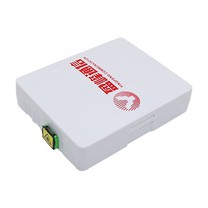
In the context of fiber optics, the term "mode" refers to the different paths or patterns in which light can propagate through an optical fiber. A mode represents a distinct spatial distribution of the light energy within the fiber.
Fiber optic cables are designed to support one or multiple modes of light propagation. The two most common types of modes used in fiber optics are:
Single Mode: In single-mode fibers, only one mode of light can propagate. The core of a single-mode fiber is very thin (typically around 9 microns in diameter), which allows for the transmission of a single ray of light in a straight line. Single-mode fibers are primarily used for long-distance communication, such as in telecommunications and high-speed data transmission.
Multimode: In multimode fibers, multiple modes of light can propagate simultaneously. Multimode fibers have a larger core diameter (typically 50 or 62.5 microns), which enables multiple light rays to travel through the fiber at different angles or paths. Due to the different paths taken by the light rays, multimode fibers have a limited maximum distance for signal transmission and are commonly used in shorter-distance applications like local area networks (LANs) and data centers.
The mode of a fiber affects various characteristics, including the bandwidth, attenuation, and dispersion properties of the fiber. Therefore, it is an important consideration when selecting fiber optic cables for specific applications.






